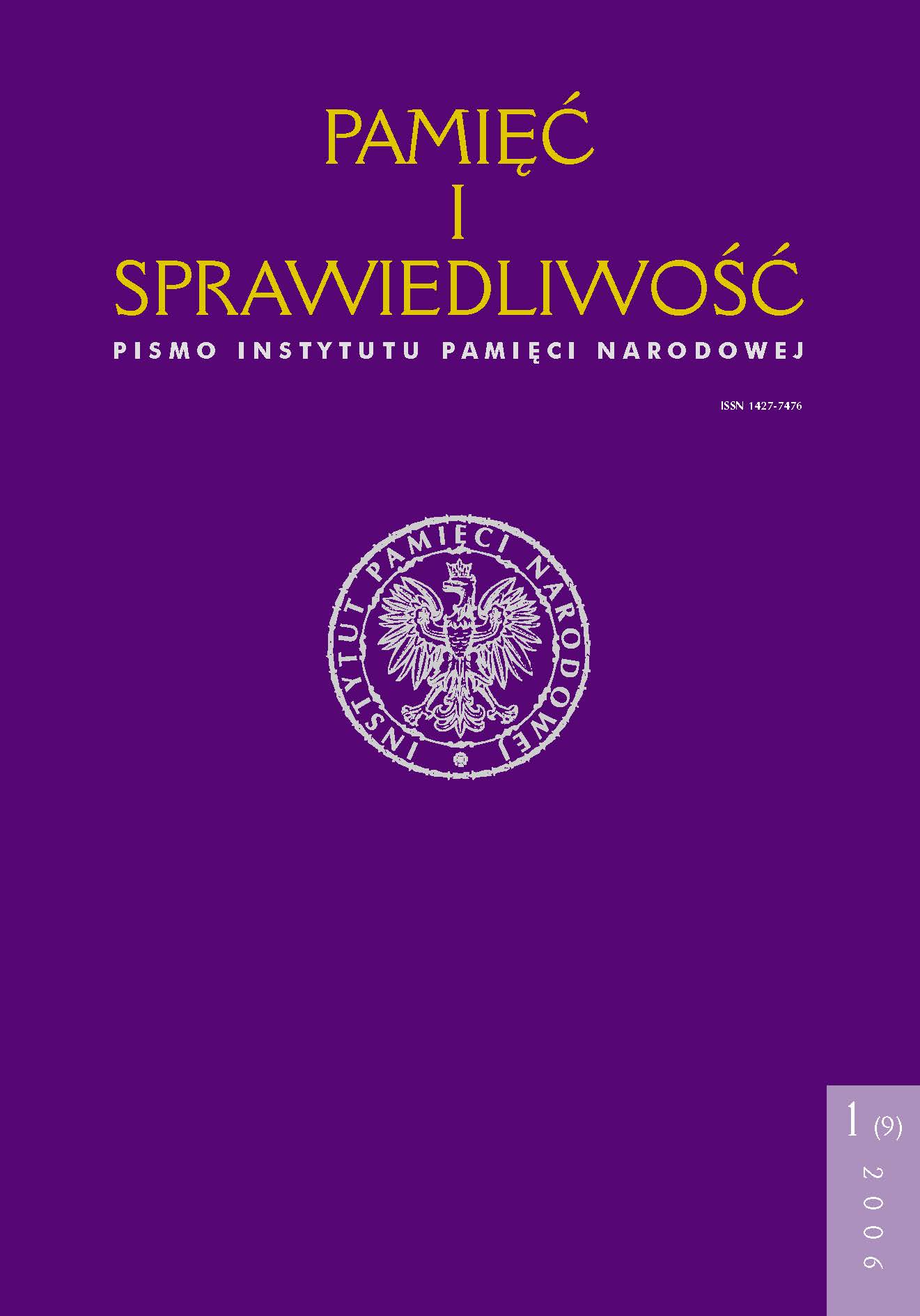Spór o Wierzchowiny. Działalność oddziałów Akcji Specjalnej (Pogotowia Akcji Specjalnej) NSZ w powiatach Chełm, Hrubieszów, Krasnystaw i Lubartów na tle konfliktu polsko-ukraińskiego (sierpień 1944 r. – czerwiec 1945 r.)
Pamięć i Sprawiedliwość, Том 9 № 1 (2006), pages: 265-308
Publication date: 2006-06-30
Аннотация
One of the numerous mysterious episodes of Polish – Ukrainian civil war are among others events that took place on 6th June 1945 in the village Wierzchowiny in the Krasnystaw district of Lublin province. Until now it has been a burning issue raising disputes, discussions accompanied by negative emotions, and accusations of ignorance and manipulations of historical facts. The discrepancies concern not only basic issues such as finding
the actual perpetrators or settling the real number of Ukrainian victims but also the accurate interpretation of those events.
Spring 1945 was the turning point in extremely hostile Polish – Ukrainian relations in Lublin region. In order to meet the expectations of the people tired of a long-lasting Polish
– Ukrainian civil war (the conflict escalated in the spring 1944), Home Army-Delegation of Armed Forces (AK-DSZ) and nationalistic Ukrainian underground entered into a local
agreement reconciling the sides and stopping unnecessary bloodshed.
At the same time the nationalistic wing of Polish underground stated that the ruthless fighting should be continued as a retaliation for Ukrainian attitudes during the war, especially for the so called anti-Polish action by Organisation of Ukrainian Nationalists (OUN) and Ukrainian Insurgent Army (UPA) in Volhynia and Eastern Galicia. Nationalistic wing leaders were also convinced that there was a necessity to make a post-war Poland an ethnically pure country without minorities so numerous until 1939 (Ukrainians being the largest minority group). In spring 1945 the National Armed Forces intensified their activity against the Ukrainians, what violated the agreement concluded by the Home Army-Delegation of Armed Forces and Organisation of Ukrainian Nationalists and Ukrainian Insurgent Army and could have lead to the revival of a conflict and increasing the number of victims on both sides. Moreover, such conduct resulted in deterioration of already strained relations between both freedom organisations tending to become leaders in the fight against the communist security apparatus.
In this article the author concentrated above all on the activity of the troops of Special Action of National Armed Forces against Ukrainians and communist activists and sympathizers among them in the period from August 1944 till June 1945 in Chełm, Hrubieszów, Krasnystaw and Lubartów districts. Presenting the genesis of events in Wierzchowiny the attempt was made to prove that pacification of Wierzchowiny was not accidental, but it was, perhaps, a well planned action within the wider reprisal operation under a codename „Beyond the Bug river”.
Reconstructing the events various sources of many origin were used (National Armed Forces, Security Police, NKVD, Polish Army, local civil administration, contemporary and later accounts of eye witnesses and participants) published earlier and also the ones which saw the light of day for the first time.
Nevertheless, recapturing the events which took place over 60 years ago we should remember, that the decisions made by the leaders of National Armed Forces in Lublin region concerning the way of settling the Ukrainian problem had disastrous consequences for the organisation itself and were perfectly exploited by the communist government in their fight with „home reactionaries” – opposing the communist regime.
Наиболее читаемые статьи этого автора (авторов)
- Mariusz Zajączkowski, „Legenda w najlepszym wypadku…”. Kilka uwag na marginesie wojennych losów Stanisława Basaja „Rysia” , Pamięć i Sprawiedliwość: Том 29 № 1 (2017)
- Mariusz Zajączkowski, Konflikt polsko-ukraiński w dystrykcie lubelskim w optyce dokumentów niemieckich. Faza kulminacyjna (marzec - czerwiec 1944r.) , Pamięć i Sprawiedliwość: Том 38 № 2 (2021)
- Mariusz Zajączkowski, „Sformować dywizje siekierników – postrach Lachów”. Przyczynek do genezy i charakteru akcji antypolskiej OUN-B i UPA na Chełmszczyźnie w pierwszej połowie 1944 roku , Pamięć i Sprawiedliwość: Том 29 № 1 (2017)
 Język Polski
Język Polski
 English
English
 Deutsch
Deutsch
 Français (France)
Français (France)
 Italiano
Italiano
 Русский
Русский


 PDF (Język Polski)
PDF (Język Polski)
